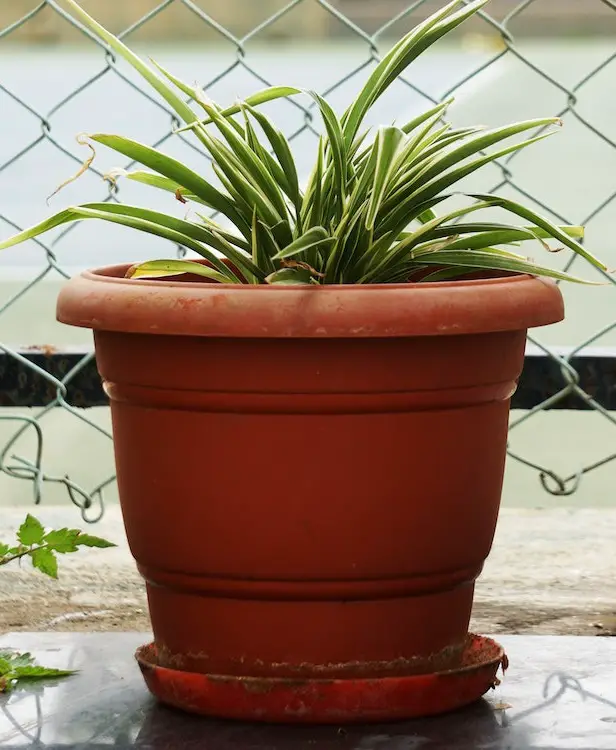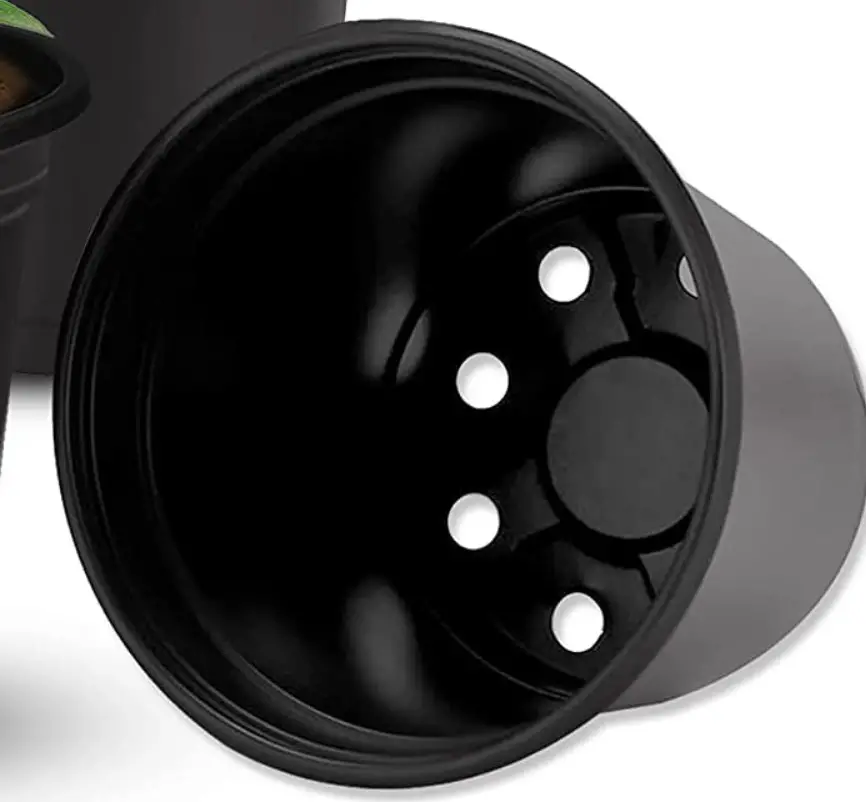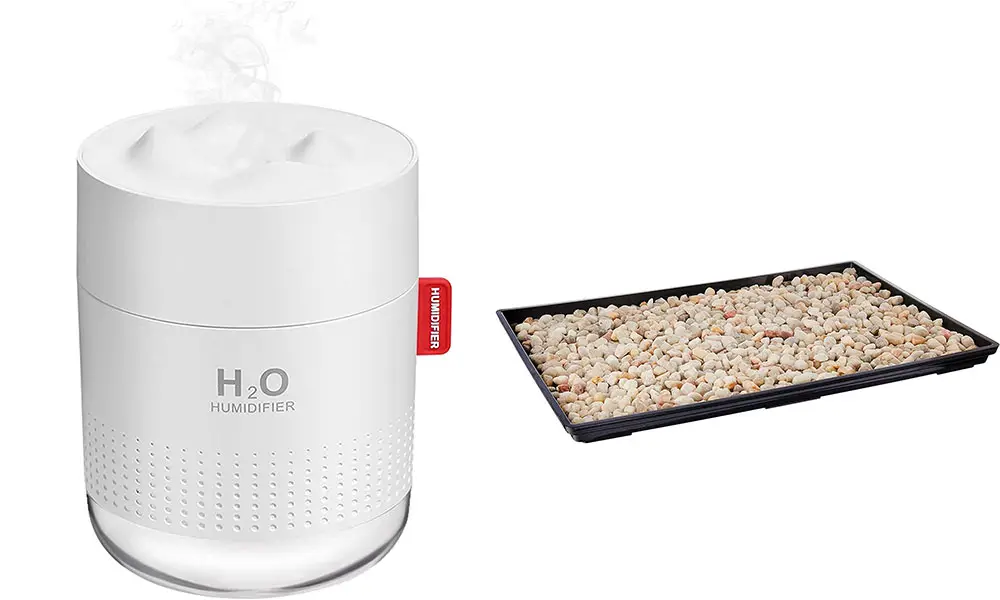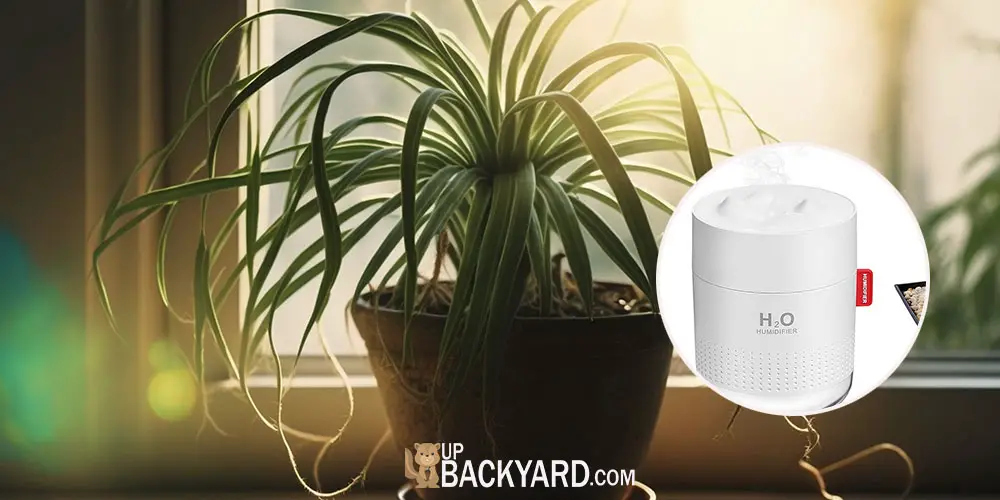When it comes to choosing houseplants that are durable and easy to care for, spider plants make great additions to your home garden.
Not only are they beautiful to look at with a variety of shapes and colors, they also are hardy which is especially great for beginners or those who think they may have a black thumb.
While spider plants’ low maintenance attitude and unique foliage are alluring to many houseplant enthusiasts, there is something that you should consider before grabbing a few plants; spider plants prefer a humid environment.
These plants thrive when humidity is between 40-80%, which is more than an average house would be. Luckily, this can be solved with a room humidifier or a humidity tray beneath the pot.
Even without taking any additional measures to increase the humidity of a room, spider plants can thrive in a multitude of conditions. Read on to learn how to care for your newest houseplant addition, spider plants!
Spider Plants Like Humidity
Since spider plants are native to many different countries throughout Africa, including Ethiopia, Nigeria, and down the coast to South Africa, they prefer the climate and temperature of their homeland.
Many species of spider plants are found in rainforests, which offer them a warm temperature and a large amount of humidity.
Even though most spider plants purchased in America have been cross bred to be adapted to home environments, they thrive when given the appropriate amount of humidity.
Luckily, you can easily recreate their ideal environments in your home with humidifiers and humidity trays.
Caring For A Spider Plant
Spider plants, also called ribbon plants, are simple and easy to care for. They almost thrive on neglect, which is great for many first-time plant owners or those who travel often and worry that plants won’t work in their lives.
Similar to pothos plants, spider plants tend to be low maintenance and quick growing, but if you want them to truly thrive, following some simple care tips will keep your plant happy and healthy.
Sunlight

All plants need sunlight to grow. Small cells in the plant’s leaves help perform photosynthesis which is the process of turning the sun’s energy into energy the plant can use to grow and live.
Without sunlight, plants will shrivel and die off. However, if they are given too much direct sunlight, the foliage can burn or turn crispy before dying off.
The trick is to provide your spider plant with bright but indirect light. Do not place your plant directly in a window where it will receive strong sunshine throughout the day.
Instead, place the plant on a table or stand a few feet from the window, allowing the plant to receive the light indirectly.
If you notice your plant is wilting and turning brown, it may be getting too much sun. Move the plant further from the window to ensure that the leaves are not getting sunburned.
Water
Along with sunlight, water is necessary for your plant’s survival. A common problem new houseplant owners have is that they tend to overwater their plants.
This can also cause plants to die as well as increase the chances of a fungal or insect infestation.
Use your finger to check the soil by sticking it into the top 2 inches of the soil in the pot. If it feels dry, water your plant thoroughly.
If you feel moisture, wait a few more days and test again before watering. This simple technique prevents overwatering and oversaturating the soil with moisture.
Use distilled water or collected rain water when watering your spider plant as they can be sensitive to salts and minerals that are in tap water.
These minerals can build up on the plant’s root system and block the nutrients from entering the plant.
Another important thing to check when it comes to watering your spider plant is the number of drainage holes in its pot. You will want to ensure proper drainage to prevent water from pooling at the bottom of the pot and causing root rot.

Generally, plastic garden pots will have enough drainage holes, however, if they don’t, you can easily add more yourself.
It is best to keep your plant in a plastic garden pot and then place the entire pot into a decorative pot, since many decorative pots do not have proper or enough drainage holes.
Humidity & Temperature
Spider plants can be placed in just about any room in your home and still survive. However, they are tropical plants by nature and love a good amount of humidity.
A great place to put your spider plant is in a bathroom that has a window. This will allow your plant to receive bright indirect light as well as the humidity from the warm shower running.
If you do not want to keep your plant in the bathroom, you can also invest in a room humidifier. These are a great option if you have multiple plants that prefer a more humid environment.
You could also invest in a smaller shelf humidifier or even a humidity tray. A humidity tray can be made from gravel or other rocks placed in a tray or in a shallow bowl.

Then, pour water over the rocks and place the potted plant on top. This will increase the humidity of the air immediately surrounding your spider plant.
Toxicity
While some plants can be toxic to dogs, cats, or even humans, spider plants are considered to be safe and non-toxic. This is just another reason that these unique and beautiful plants are some of the most common choices for houseplants.
Even with a non-toxic rating, it is still best to keep the plant out of reach of pets and children. Cats can be more likely to chew on or eat the leaves from the plant and this can result in an upset stomach, diarrhea, or vomiting.
Fertilizer
Many people like to feed their plants a few times a year depending on how quick growing the plants are. While you can fertilize with an appropriate houseplant fertilizer once every month during the summer season, it is not necessary.
If you do choose to fertilize your plant, be sure that it has not been transplanted or repotted within the last 6 weeks.
Choose an all-purpose, water-solvable, or granular time-release fertilizer for indoor houseplants to ensure that you do not over fertilize your plant and cause harm.
Over-fertilizing the plant can lead to shock which will result in yellowing leaves and a dying plant. It is incredibly hard to save a plant once it has gone into shock from too much fertilizer.
However, you can try. Remove the plant from the soil and rinse the roots well with running water to remove any traces of the fertilizer. Repot in fresh soil and avoid fertilizing again for at least 3 months.
If you do not want to fertilize your plant, repotting with fresh garden soil every other season will provide enough nutrition for your plant. Be sure to size up 1 or 2 inches in the pot’s diameter if the plant has outgrown its current pot.
Pests & Other Problems
Even with the plant’s beginner level status, it is still prone to many common pests like aphids, scales, spider mites, and whiteflies.
To help prevent pests from infesting your plant, be sure to quarantine any new plants for 2 weeks before bringing it near your current plants.
Well draining soil will help prevent water build up which makes a great breeding ground for whiteflies and other pests.
You can also treat your plants every 2 weeks with neem oil to help deter pests from making a home in your plants.
Final Thoughts
Spider plants make great houseplants for both novice and experienced plant owners alike. Their unique ribbon shaped foliage and low maintenance attitudes make these plants some of the most common and sought-after houseplants.
Because spider plants are originally from African rainforest, they prefer a good amount of humidity and warmer temperatures. Although they can thrive in almost any home environment, adding a humidifier or a humidity tray can help keep your plants very happy.
Spider plants are also easy to care for, needing bright indirect light, limited water, good draining soil, and small amounts of fertilizer. However, overdoing any of these elements can throw the spider plant off balance and send it into distress. Learning how to understand your plant can help prevent over watering or over fertilizing.
Checking your plant weekly for pests is also important as spider plants are not immune to many common houseplant insects.
Aphids, scales, spider mites, and whiteflies have been known to frequently nest in spider plants thanks to their foliage providing the perfect shelter.
Treat your plant weekly with neem oil to prevent and deter pests from your plant and be sure to quarantine any new plant for at least two weeks before introducing it to your others.
With a small amount of effort, spider plants can thrive and add beauty to any room in your home. Not only do they offer unique foliage, they also purify the air around them, making your home both beautiful and healthier!
